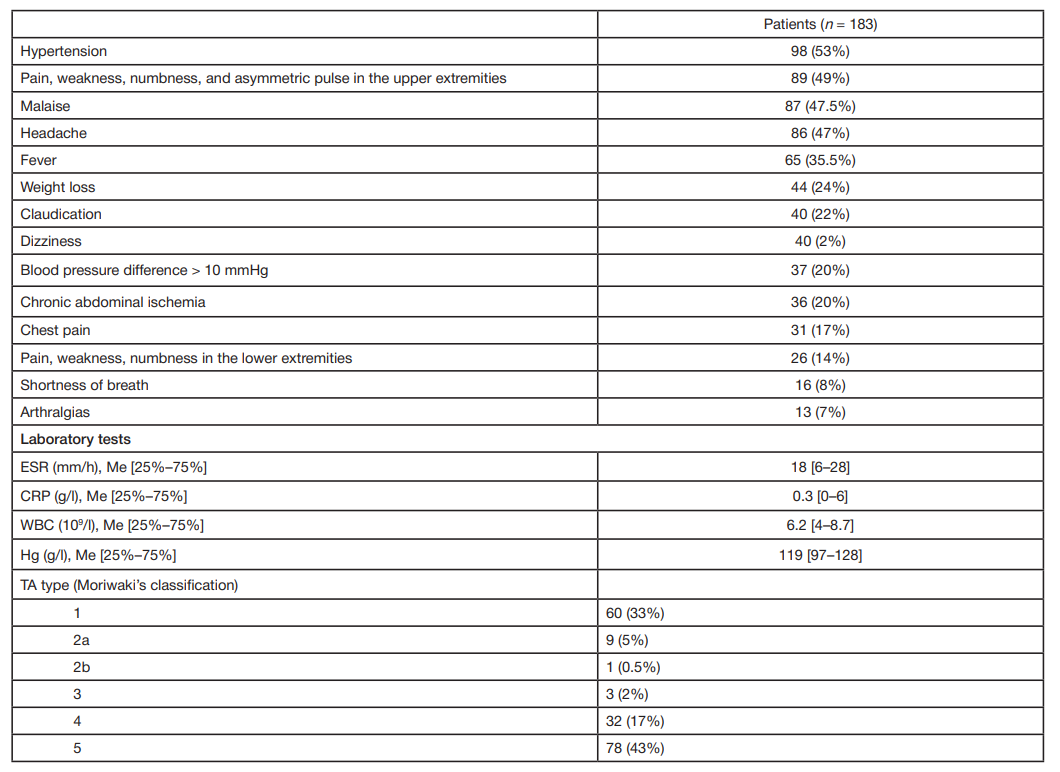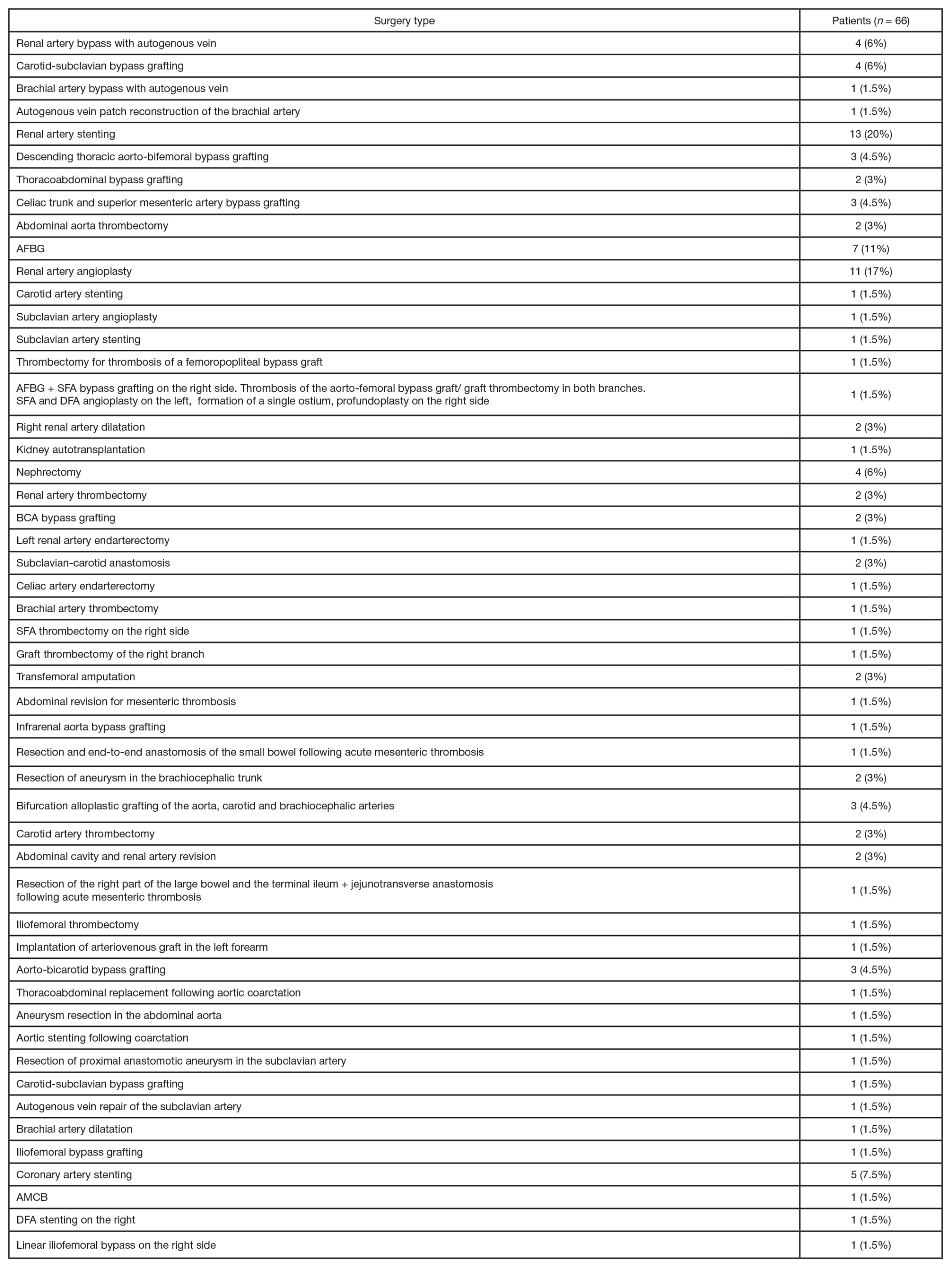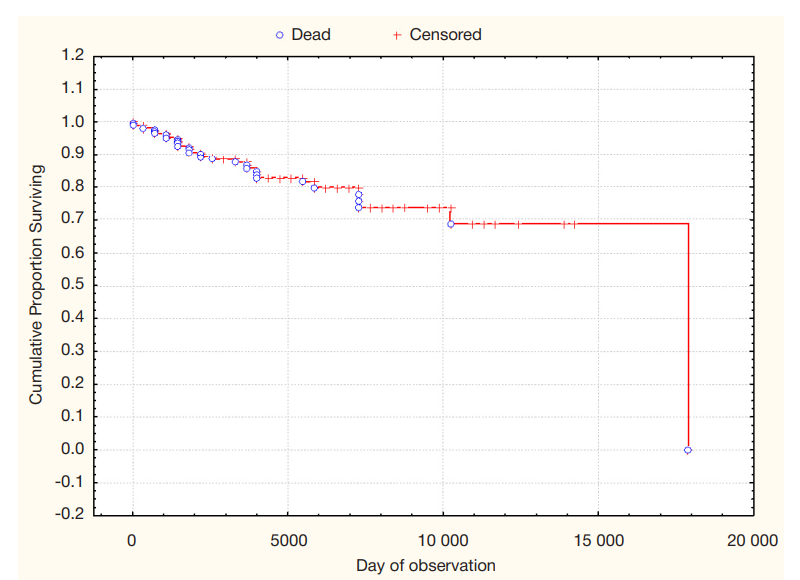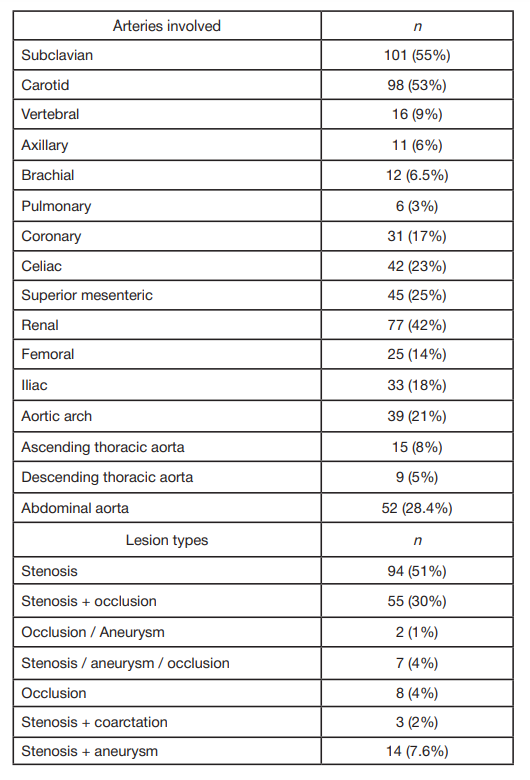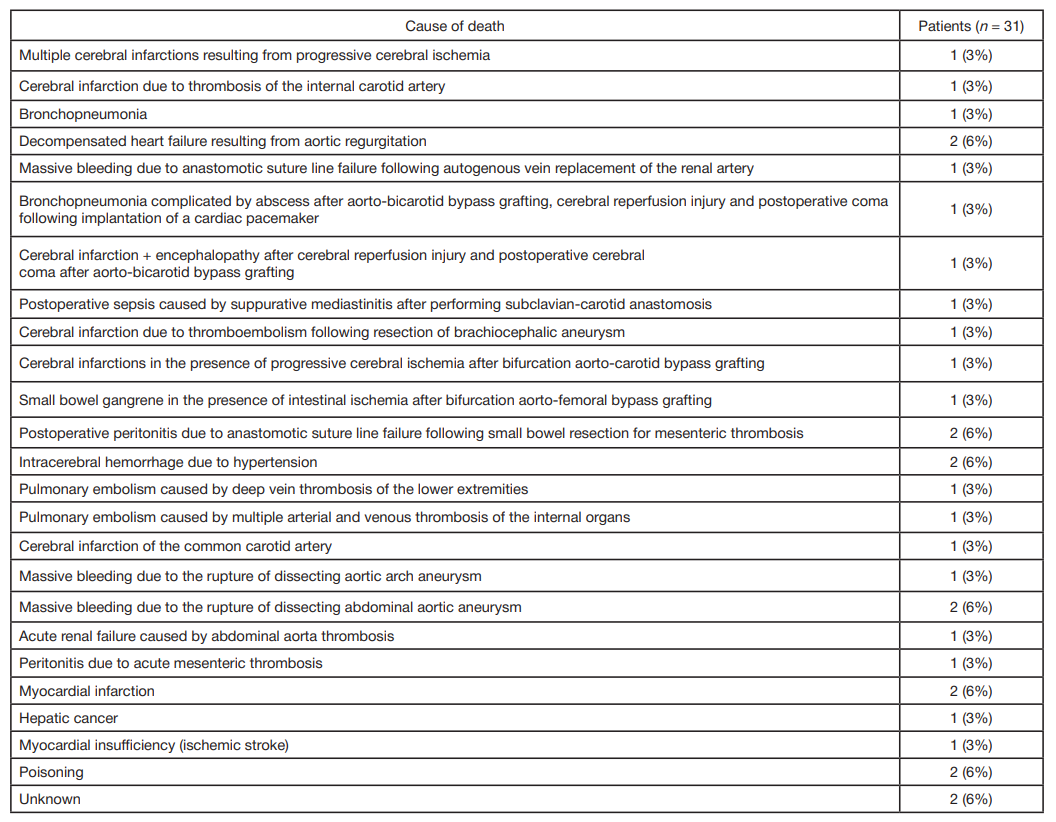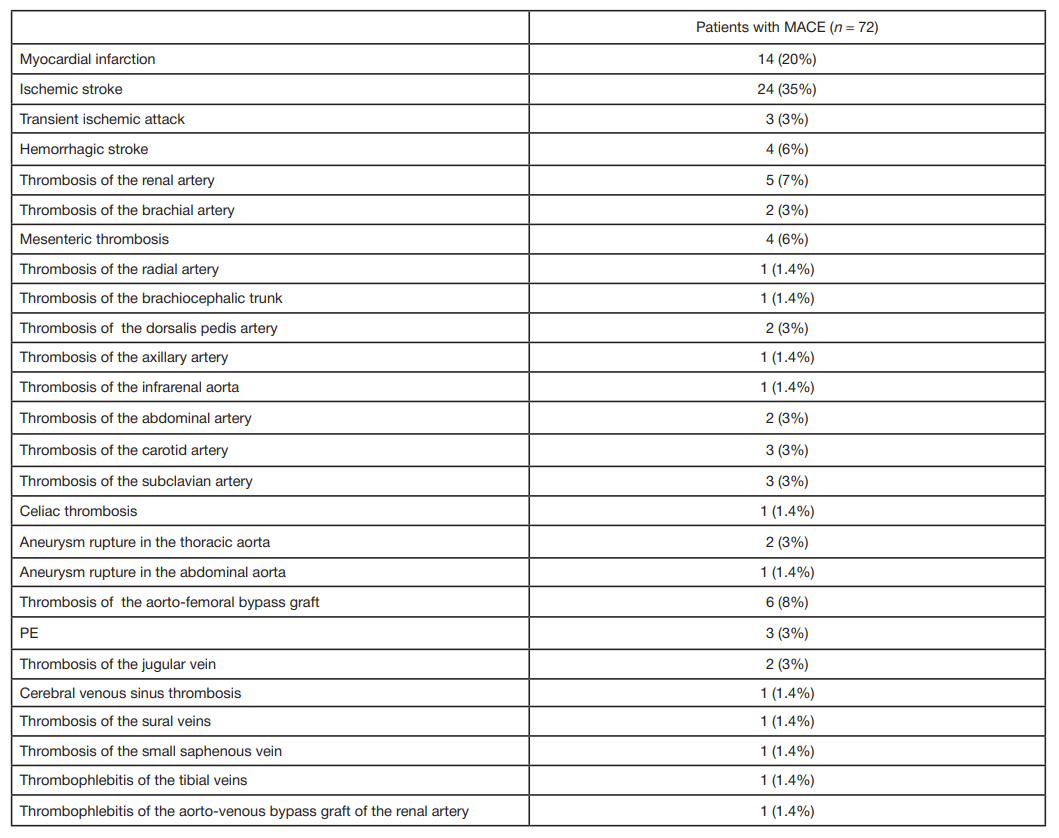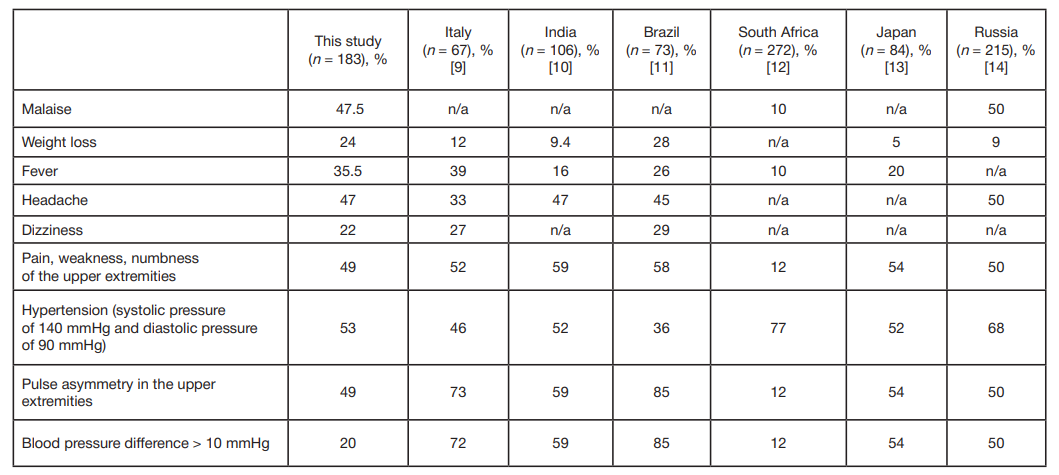
ORIGINAL RESEARCH
Takayasu's arteritis: the retrospective analysis of patients from the Ural population
1 Sverdlovsk Regional Clinical Hospital No.1, Yekaterinburg, Russia
2 Ural State Medical University, Yekaterinburg, Russia
Correspondence should be addressed: Irina E. Borodina
Repina 3, Yekaterinburg, Sverdlovsk region, 620014; ur.liam@kisydorob
Author contribution: all authors participated in conceiving and planning the study, processing the data, discussing the results, and writing the manuscript. Borodina IE and Salavatova GG collected the medical records for the electronic database.
